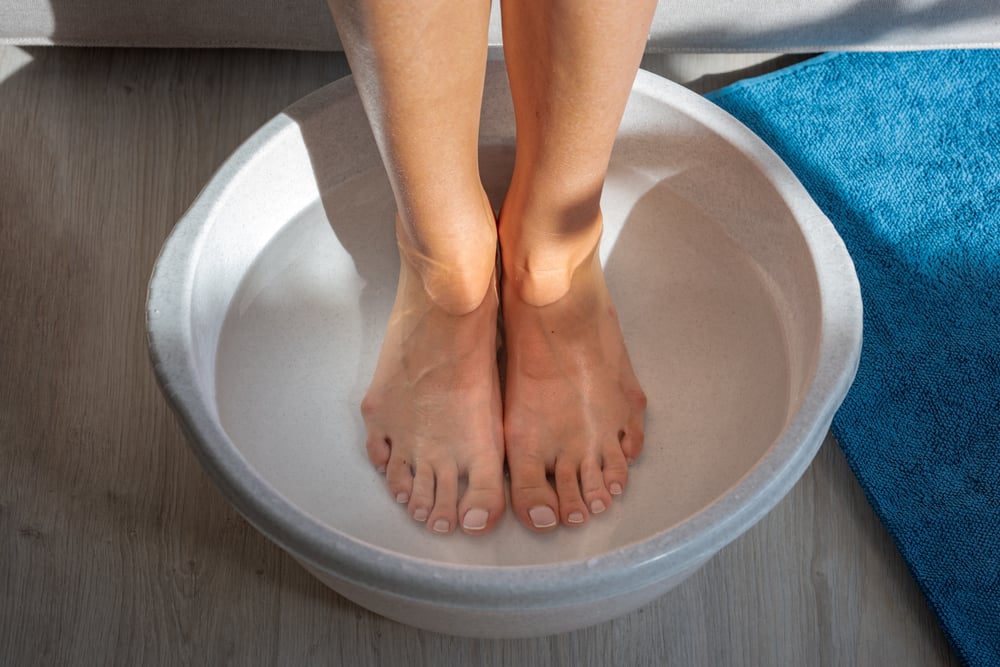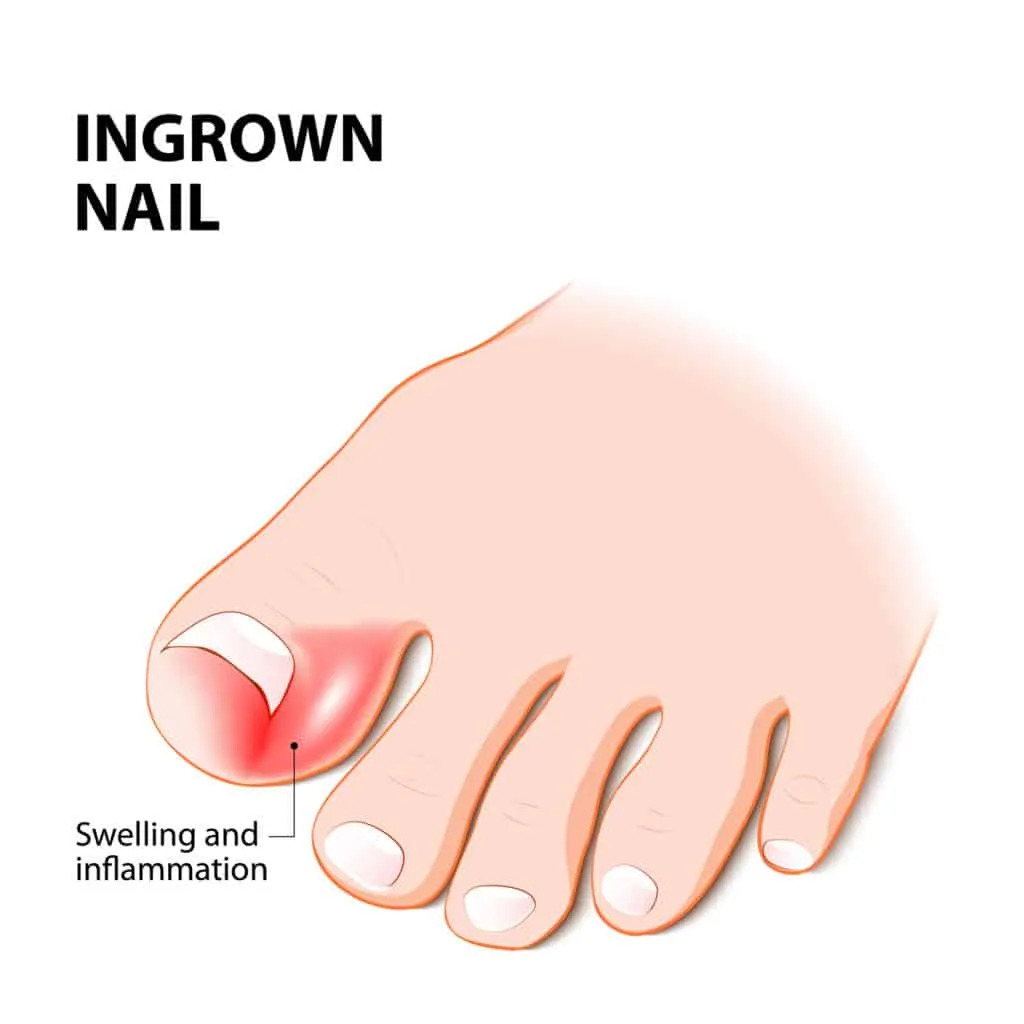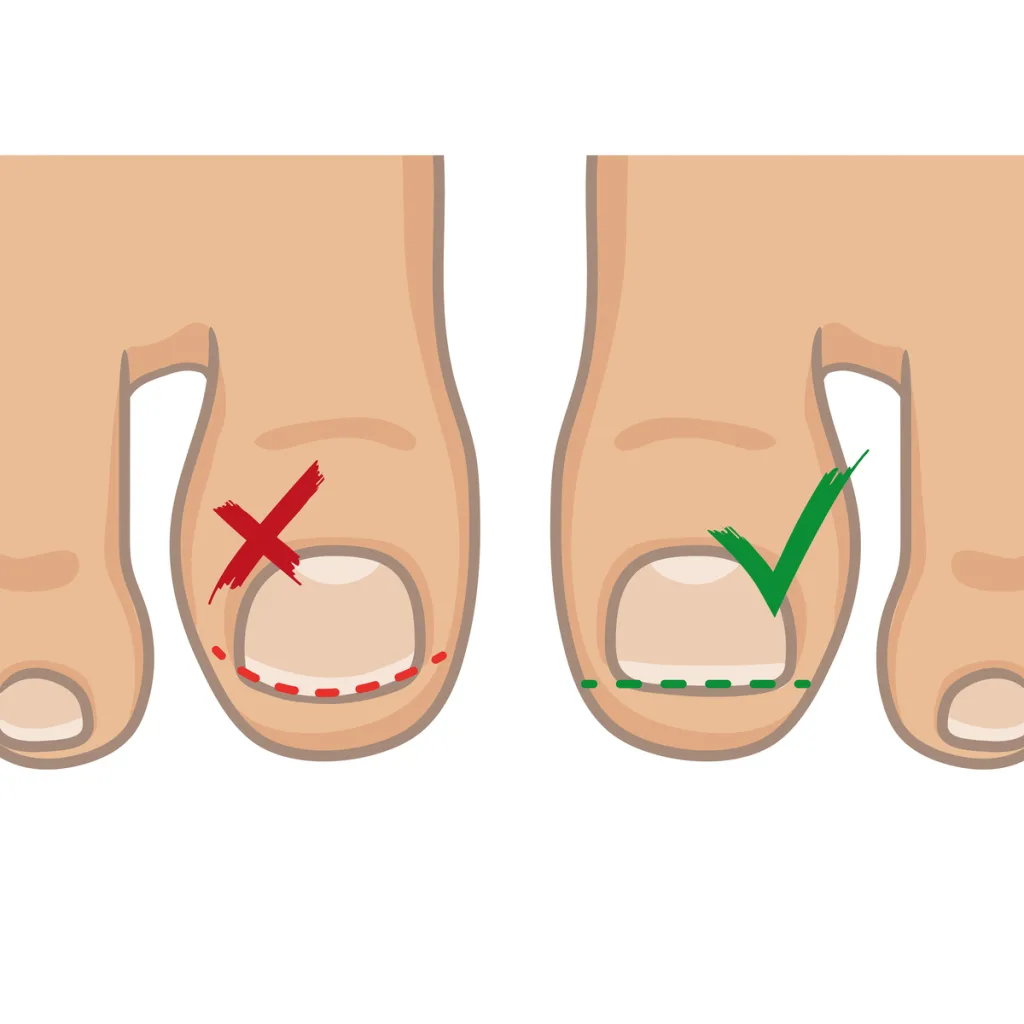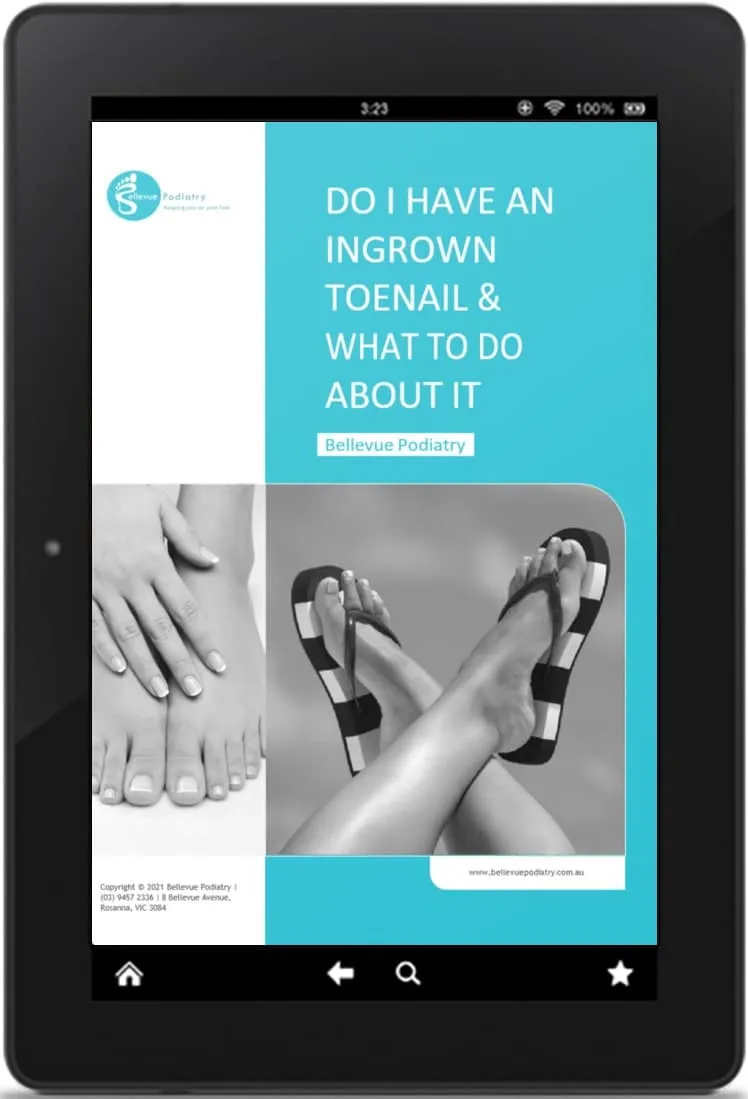Imagine you’ve been dealing with an ingrown toenail for weeks, and nothing seems to bring lasting relief. You’ve tried soaking your foot in warm water and even using apple cider vinegar, but the pain persists. It’s tempting to look for a quick fix, something that might dissolve the ingrown toenail altogether.
Is that really possible, or are you risking further complications? Let’s explore what actually works and when it’s time to seek professional help.
Ingrown Toenail Home Remedies
Let’s get straight to the point: unfortunately, there are no at-home remedies that can physically dissolve an ingrown toenail. Fortunately, several home remedies can significantly alleviate the associated pain and discomfort.
Water Soaks
Soaking the affected toe in warm, soapy water promotes softening of the surrounding skin and can reduce inflammation.
By immersing your toe for 15-20 minutes, two to three times a day, you’ll create an environment that eases discomfort and aids in managing the ingrown toenail. The warmth improves blood circulation, helping to reduce swelling and pain.
Adding Epsom salts to the soak can enhance the benefits. Epsom salts contain magnesium sulphate, which can draw out infections and relieve pain.
Use a basin with enough water to cover your feet, and dissolve half a cup of Epsom salts in it. Make sure the water is comfortably warm, not hot, to avoid burns.

After soaking, dry your foot thoroughly to prevent fungal infections. Follow up with an antiseptic ointment to maintain cleanliness and protect against bacteria.
Consistency is key. Regular warm water soaks can notably improve your condition and offer relief, fostering a sense of control and community among those dealing with similar issues.
Ingrown Toenail Dental Floss Technique
A practical home remedy for alleviating the discomfort of an ingrown toenail involves gently lifting the nail away from the skin with dental floss.
- To minimise the risk of infection, start by thoroughly washing your hands and the affected toe with soap and water.
- Soak your foot in warm water for about 15–20 minutes to soften the nail and surrounding skin.
- Using a clean piece of waxed dental floss, carefully slide it under the edge of the ingrown nail. This action should slightly elevate the nail, reducing the pressure on the surrounding tissue.
- Make sure you're using waxed dental floss, as it glides more smoothly and reduces the risk of further irritation. Reposition the floss daily, ideally after your soaking routine, to gradually guide the nail to grow above the skin.
- To avoid exacerbating the problem or causing additional trauma to the toe, be gentle.
Remember, persistence and proper hygiene are key. If symptoms persist or worsen, consult a podiatrist for a more detailed treatment plan.
Antiseptic Ointment Application
Applying antiseptic ointment to the affected area can greatly reduce the risk of infection and promote the healing of an ingrown toenail. You’ll want to keep the area as clean as possible to prevent bacteria from exacerbating the issue.
After thoroughly washing your hands and the affected toe, gently apply a thin layer of antiseptic ointment.
Here’s what you should do:
Clean
Wash the toe with warm, soapy water, making sure to remove all debris and bacteria.
Dry
Pat the area dry with a clean towel to prevent moisture from creating a breeding ground for bacteria.
Apply
Spread a thin layer of antiseptic ointment over the ingrown toenail and surrounding skin.
Cover
Use a sterile bandage or gauze to protect the area from further irritation and contamination.
Ingrown Toenail Relief Options
Over-the-counter treatments like nonsteroidal anti-inflammatory drugs (NSAIDs) can effectively alleviate the pain and swelling associated with ingrown toenails. These medications, such as ibuprofen or naproxen, work by reducing inflammation and providing analgesic effects.
When dealing with an ingrown toenail, it’s essential to address the pain promptly to maintain your daily activities comfortably.
In addition to NSAIDs, several other over-the-counter options can offer relief, including:
- Topical analgesics: Creams or gels containing lidocaine or benzocaine can numb the affected area, providing immediate, albeit temporary, pain relief.
- Toe protectors: Silicone toe caps or bandages can cushion the painful area, protecting it from further irritation and allowing for more comfortable movement.
- Antiseptic sprays: Using sprays with antibacterial properties can help to keep the area clean and reduce the risk of secondary infections, which can exacerbate pain.
Utilising these over-the-counter treatments can help you manage pain effectively, ensuring that you remain an active part of your community and daily life.
Prevention Methods
Antiseptic sprays or ointments containing ingredients like povidone-iodine or hydrogen peroxide can be highly effective in preventing infection in an ingrown toenail. These agents work by eliminating bacteria and reducing the risk of infection, a common complication with ingrown toenails.
When you apply these treatments, make sure you cover the entire affected area, allowing the antiseptic to penetrate any cuts or openings around the nail.
Choosing the right over-the-counter product is essential. Look for solutions specifically designed for minor wounds and skin irritations. Products containing povidone-iodine are especially useful due to their broad-spectrum antimicrobial properties, making them a staple in infection control. Hydrogen peroxide, on the other hand, provides a bubbling action that helps cleanse the wound, ensuring thorough disinfection.
In addition to antiseptics, consider using adhesive bandages to keep the area clean and protected from external contaminants. Change the bandage daily and reapply the antiseptic to maintain a sterile environment.

Preventative Measures
Consistently trimming your toenails straight across and avoiding cutting them too short can greatly decrease the risk of developing ingrown toenails. This practice guarantees that the edges of your nails don’t dig into the surrounding skin, which is a primary cause of ingrown toenails. To maintain nail health and prevent complications, use sterilised nail clippers and aim for a moderate length.
Wearing properly fitted shoes is another essential preventative measure. Tight or improperly sized footwear exerts unnecessary pressure on your toes, increasing the likelihood of ingrown nails. Opt for shoes with ample toe space and good ventilation to minimise moisture accumulation, which can soften the skin and exacerbate the issue.
Regular foot hygiene also plays an important role in prevention. Wash your feet daily with soap and water and thoroughly dry them, especially the areas between your toes. Moisturising your feet helps maintain skin elasticity, reducing the risk of nail penetration into the skin.
Lastly, consider rotating your footwear and socks frequently to avoid prolonged pressure and moisture. By adopting these preventative measures, you’re joining a community of individuals committed to proactive foot care and excellent health.

When To Seek Help For An Ingrown Toenail
If your ingrown toenail persists despite home remedies or shows signs of infection, it’s crucial to consult a healthcare professional for proper treatment. Seeking assistance as soon as possible can prevent complications and ensure that you receive the most effective care.
Look out for these symptoms that indicate professional intervention is necessary:
If the pain remains severe or worsens, it may indicate a more serious problem that requires medical attention.
Persistent inflammation around the toenail can be a sign of an infection that needs antibiotics or surgical intervention.
The presence of pus or any unusual discharge is a clear indication of infection demanding immediate attention.
If redness or swelling extends beyond the toe, it suggests the infection is spreading, necessitating urgent care.
A podiatrist or healthcare provider can perform minor surgical procedures to remove the ingrown portion of the nail or prescribe antibiotics to treat any infection. Ignoring these signs can lead to more severe complications, such as abscess formation or the spread of infection to the bone.
Taking immediate action guarantees effective management of your condition, facilitating your return to comfort and normalcy.
Summing It Up...
You can’t dissolve an ingrown toenail at home, but don’t worry—there are effective treatments available. Imagine yourself soaking your foot in warm, soapy water to reduce inflammation, and imagine the relief a professional can provide with topical antibiotics or hydrocortisone creams.
Prompt action prevents complications and promotes healing. Trust a healthcare provider’s expertise to guide you through the best treatment options, ensuring your toe feels better quickly and effectively.
If you think you may have an ingrown toenail and want the right professional advice on how to treat it, we currently have a limited offer running to help you out. A GAP FREE ingrown toenail assessment consult (only $59 for those without extras private insurance).
Please feel free to book yourself in online or call our friendly Reception on (03) 8104 9270 today.
Ingrown Toenail Infection
Understand how you get ingrown toenails your self care home options and what you can do to get rid of them once and for all. You don't need to put up with the pain of an ingrown toenail any longer.

